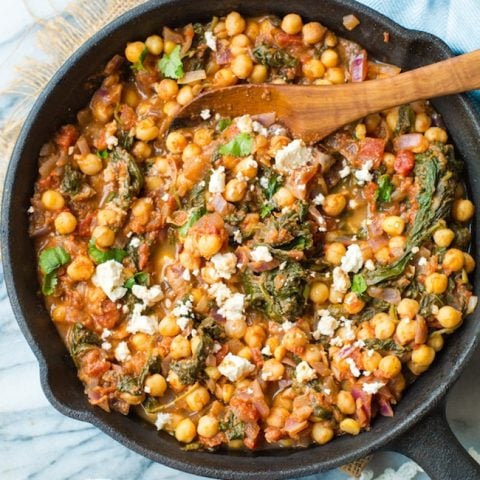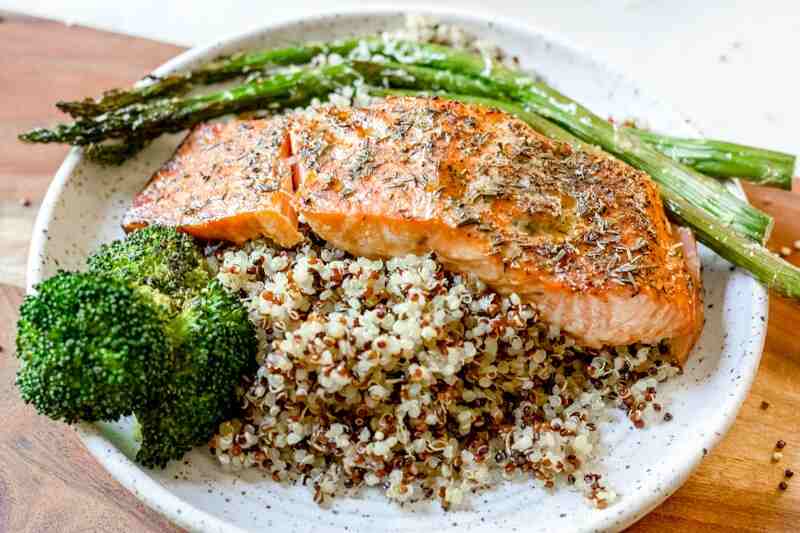Introduction:
Heart Healthy Recipes For Dinner Maintaining a heart-healthy diet is crucial for overall well-being and longevity. A balanced diet that promotes heart health typically focuses on whole grains, lean proteins, fruits, vegetables, and healthy fats. These components help reduce cholesterol levels, control blood pressure, and improve overall cardiovascular health. Here are some delicious and nutritious heart-healthy recipes for dinner that are easy to prepare and packed with flavor.
1.Grilled Salmon with Quinoa and Asparagus
Ingredients:
4 salmon fillets
1 cup quinoa
1 bunch asparagus, trimmed
2 tablespoons olive oil
1 lemon, juiced
2 cloves garlic, minced
Salt and pepper to taste
Fresh herbs (parsley, dill) for garnish
Instructions:
Preheat the grill to medium-high heat. Brush the salmon fillets with 1 tablespoon of olive oil and season with salt, pepper, and half the lemon juice.
Cook the quinoa according to package instructions.
Toss the asparagus with 1 tablespoon of olive oil, garlic, salt, and pepper. Grill the asparagus and salmon for 4-5 minutes per side or until the salmon is fully cooked and flaky.
Serve the grilled salmon over a bed of quinoa, with asparagus on the side. Drizzle with the remaining lemon juice and garnish with fresh herbs.
Health Benefits: Salmon is rich in omega-3 fatty acids, which are known to reduce inflammation and lower the risk of heart disease. Quinoa provides fiber and protein, while asparagus adds antioxidants and essential vitamins.
2.Mediterranean Chickpea and Spinach Stew

Ingredients:
1 can chickpeas, drained and rinsed
2 cups fresh spinach
1 medium onion, chopped
3 cloves garlic, minced
1 can diced tomatoes
2 tablespoons olive oil
1 teaspoon ground cumin
1 teaspoon paprika
Salt and pepper to taste
Fresh parsley for garnish
Instructions:
Heat olive oil in a large skillet over medium heat. Sauté the onion and garlic until soft and fragrant.
Add the cumin and paprika, stirring for about 1 minute.
Add the diced tomatoes and chickpeas. Simmer for 10 minutes until the flavors meld together.
Stir in the fresh spinach and cook until wilted. Season with salt and pepper.
Serve hot, garnished with fresh parsley.
Health Benefits: Chickpeas are high in fiber, which helps to lower cholesterol levels, and spinach is a great source of vitamins, minerals, and antioxidants that support heart health.
3.Baked Lemon Herb Chicken with Roasted Vegetables
Ingredients:
4 boneless, skinless chicken breasts
3 tablespoons olive oil
1 lemon, zested and juiced
2 teaspoons dried herbs (thyme, rosemary, oregano)
1 pound baby potatoes, halved
2 cups broccoli florets
1 red bell pepper, sliced
Salt and pepper to taste
Instructions
Preheat the oven to 400°F (200°C). In a small bowl, mix 2 tablespoons of olive oil, lemon zest, lemon juice, dried herbs, salt, and pepper.
Place the chicken breasts in a baking dish and pour half of the lemon herb mixture over them. Toss the vegetables with the remaining olive oil and lemon herb mixture, then place them around the chicken in the baking dish.
Bake for 25-30 minutes or until the chicken is cooked through and the vegetables are tender.
Serve the chicken with roasted vegetables, and drizzle with any remaining pan juices.
Health Benefits: Chicken is a lean protein that helps maintain muscle mass and is lower in saturated fat compared to red meats. The combination of roasted vegetables provides essential vitamins and minerals, along with fiber.
4.Lentil and Vegetable Stir-Fry with Brown Rice
Ingredients:
1 cup brown rice
1 cup green or brown lentils, cooked
1 tablespoon sesame oil
1 bell pepper, sliced
1 zucchini, sliced
1 carrot, julienned
2 cloves garlic, minced
1 tablespoon low-sodium soy sauce
1 tablespoon sesame seeds
2 green onions, chopped
Instructions:
Cook the brown rice according to package instructions.
Heat sesame oil in a large skillet over medium heat. Add the garlic and stir-fry for 1 minute until fragrant.
Add the bell pepper, zucchini, and carrot to the skillet. Stir-fry for 5-7 minutes until the vegetables are tender but still crisp.
Stir in the cooked lentils and soy sauce, cooking for another 2-3 minutes.
Serve the stir-fry over brown rice, topped with sesame seeds and green onions.
Health Benefits: Lentils are a fantastic source of plant-based protein and fiber, which help in lowering cholesterol and maintaining a healthy heart. Brown rice provides complex carbohydrates and additional fiber, making it a better option than refined grains.
5.Avocado and Black Bean Tacos

Ingredients:
8 small whole-grain tortillas
1 can black beans, drained and rinsed
1 avocado, diced
1 cup shredded lettuce
1 cup diced tomatoes
1/4 cup chopped red onion
1/4 cup chopped cilantro
1 lime, juiced
1 tablespoon olive oil
Salt and pepper to taste
Instructions:
In a bowl, mix the black beans, avocado, tomatoes, red onion, cilantro, lime juice, olive oil, salt, and pepper.
Warm the tortillas in a dry skillet over medium heat for 1-2 minutes on each side.
Fill each tortilla with the black bean and avocado mixture and top with shredded lettuce.
Serve with a side of salsa or low-fat Greek yogurt.
Health Benefits: Avocados are rich in monounsaturated fats that help lower bad cholesterol levels, and black beans provide fiber and protein without saturated fats. Whole-grain tortillas add additional fiber, making this dish heart-friendly.
Conclusion
Heart-healthy dinners don’t have to be bland or boring. By incorporating these nutritious and flavorful recipes into your meal plan, you can enjoy delicious food while taking care of your heart. These dishes are packed with wholesome ingredients that help reduce the risk of heart disease, improve cholesterol levels, and promote overall cardiovascular health. Remember, a heart-healthy diet is just one component of maintaining a healthy heart—regular exercise, stress management, and adequate sleep are equally important!
How can I improve my heart health by eating?
Heart Healthy Recipes For Dinner Your diet plays a crucial role in maintaining heart health and preventing cardiovascular diseases. A heart-healthy diet focuses on incorporating foods that promote good cholesterol, reduce inflammation, lower blood pressure, and prevent plaque buildup in the arteries. Here’s a comprehensive guide on how you can improve your heart health by making mindful choices about what you eat:
1.Increase Your Intake of Fruits and Vegetables
Fruits and vegetables are rich in essential nutrients such as vitamins, minerals, fiber, and antioxidants. These nutrients help reduce inflammation and oxidative stress, which are key contributors to heart disease. Aim for at least five servings of fruits and vegetables daily. Focus on a variety of colors to ensure you’re getting a wide range of nutrients. Some of the most heart-friendly options include:
Berries (blueberries, strawberries, raspberries): High in antioxidants like anthocyanins, which help reduce oxidative stress and inflammation.
Leafy greens (spinach, kale, Swiss chard): Packed with vitamins, minerals, and nitrates that help regulate blood pressure.
Citrus fruits (oranges, lemons, grapefruits): Rich in vitamin C, which can help lower cholesterol levels and improve overall heart health.
2.Choose Whole Grains Over Refined Grains
Whole grains are high in fiber, which helps to lower cholesterol levels and maintain steady blood sugar levels. Unlike refined grains, whole grains retain their bran and germ, which provide essential nutrients. Including whole grains in your diet can reduce the risk of heart disease by up to 20%. Some excellent whole-grain choices are:
Oats: Rich in beta-glucan, a type of soluble fiber that helps reduce LDL (bad) cholesterol.
Brown rice and quinoa: Good sources of magnesium and other heart-healthy nutrients.
Whole wheat, barley, and farro: Provide fiber and antioxidants that help reduce inflammation and improve arterial function.
3.Incorporate Healthy Fats
Not all fats are created equal. Healthy fats, such as monounsaturated and polyunsaturated fats, help reduce bad cholesterol levels and increase good cholesterol levels, which is essential for heart health. Sources of healthy fats include:
Avocados: High in monounsaturated fats that can lower LDL cholesterol and reduce inflammation.
Nuts and seeds (almonds, walnuts, chia seeds, flaxseeds): Rich in omega-3 fatty acids, which help lower blood pressure and prevent plaque buildup in the arteries.
Olive oil: Contains heart-healthy monounsaturated fats and antioxidants that protect against heart disease.
Avoid trans fats and limit saturated fats found in processed and fried foods, fatty meats, and full-fat dairy products. These types of fats increase cholesterol levels and contribute to the development of heart disease.
4.Prioritize Lean Proteins
Lean proteins, such as poultry, fish, legumes, and plant-based proteins, are excellent alternatives to red and processed meats, which are high in saturated fats and sodium. Incorporating lean proteins into your diet can help reduce cholesterol levels and lower the risk of heart disease. Some heart-healthy protein sources include:
Fatty fish (salmon, mackerel, sardines): Rich in omega-3 fatty acids, which reduce inflammation and help maintain normal heart rhythms.
Legumes (beans, lentils, chickpeas): High in fiber and protein, helping to control blood sugar and lower cholesterol levels.
Tofu and tempeh: Plant-based protein sources that are low in saturated fat and cholesterol-free.
5.Limit Sodium and Added Sugars
Heart Healthy Recipes For Dinner Excess sodium and added sugars in the diet are major contributors to high blood pressure and heart disease. Most people consume more sodium than the recommended limit of 2,300 mg per day, often through processed foods, canned soups, and fast food. To reduce sodium intake:
Choose fresh, whole foods over processed options.
Opt for low-sodium or no-salt-added versions of products.
Flavor your dishes with herbs, spices, and citrus instead of salt.
Similarly, added sugars can lead to weight gain, increased triglycerides, and a higher risk of heart disease. Limit sugary beverages, desserts, and snacks, and choose naturally sweet options like fruits instead.
6.Stay Hydrated with Heart-Healthy Beverages
What you drink is just as important as what you eat when it comes to heart health. Opt for beverages that support hydration and provide health benefits:
Water: The best choice for hydration, helping maintain optimal blood viscosity and circulation.
Green tea: Rich in antioxidants like catechins, which help improve blood vessel function and lower cholesterol levels.
Low-fat dairy or plant-based milk: Provides essential nutrients like calcium and vitamin D without the saturated fat found in full-fat dairy products.
Avoid sugary drinks, such as sodas and energy drinks, which are high in added sugars and can lead to weight gain and other risk factors for heart disease.
7.Practice Portion Control and Mindful Eating
Eating in moderation and being mindful of portion sizes can help maintain a healthy weight, which is crucial for heart health. Overeating, even healthy foods, can lead to weight gain and associated health issues. Tips for practicing portion control include:
Use smaller plates and bowls to prevent overeating.
Read food labels to understand serving sizes and calorie content.
Eat slowly and listen to your body’s hunger and fullness cues.
Mindful eating helps you enjoy your food more, reduces emotional eating, and encourages healthier choices.
8.Incorporate More Plant-Based Meals
A plant-based diet is rich in fiber, antioxidants, and healthy fats that support heart health. You don’t have to go completely vegetarian or vegan, but incorporating more plant-based meals into your weekly routine can significantly benefit your heart. Try recipes that focus on:
Whole grains (quinoa bowls, whole wheat pasta with veggies)
Plant proteins (lentil stews, chickpea curries)
Colorful vegetables (roasted veggie salads, vegetable stir-fries)
9.Snack Wisely with Heart-Healthy Choices
Snacking doesn’t have to be unhealthy. Choosing heart-healthy snacks can help keep you satisfied between meals without compromising your heart health. Some smart options include:
Fresh fruits (apples, berries, oranges)
Raw nuts (unsalted almonds, walnuts)
Veggie sticks with hummus
Conclusion
Improving heart health through diet involves making informed choices about what you eat and drink. Focus on whole, minimally processed foods, healthy fats, lean proteins, and plenty of fruits and vegetables. Reduce sodium and added sugars, stay hydrated, and practice portion control to create a well-rounded heart-healthy diet. Small, consistent changes can lead to significant improvements in heart health and overall well-being. Remember, a healthy diet combined with regular physical activity, adequate sleep, and stress management is the key to a strong, healthy heart.
What does heart-healthy meal mean?
Heart Healthy Recipes For Dinner A heart-healthy meal is designed to support cardiovascular health by providing the body with essential nutrients while minimizing factors that contribute to heart disease. It emphasizes the consumption of whole, nutrient-dense foods that help manage cholesterol levels, blood pressure, inflammation, and overall body weight—key factors in maintaining a healthy heart. But what exactly goes into crafting a heart-healthy meal, and why is it so important?
Let’s dive into the components of a heart-healthy meal, the benefits of such meals, and practical tips on how to incorporate them into your daily diet.
Core Components of a Heart-Healthy Meal
A heart-healthy meal revolves around balancing macronutrients (carbohydrates, proteins, and fats) and incorporating a variety of micronutrients (vitamins and minerals). Here are the key components of a heart-healthy meal:
Rich in Fruits and Vegetables

Fruits and vegetables are the cornerstone of a heart-healthy diet. They are rich in vitamins, minerals, antioxidants, and dietary fiber, all of which play a crucial role in reducing the risk of heart disease. Antioxidants help neutralize harmful free radicals in the body, reducing oxidative stress and inflammation—a significant factor in the development of cardiovascular conditions.
Examples: Leafy greens like spinach and kale, cruciferous vegetables like broccoli and cauliflower, and colorful fruits like berries, oranges, and apples.
Whole Grains Instead of Refined Grains
Whole grains are a great source of fiber, B vitamins, and other essential nutrients that help regulate blood sugar levels, reduce cholesterol, and maintain a healthy weight. Unlike refined grains, which are stripped of their nutrient-dense outer layers, whole grains retain all parts of the grain kernel, offering more nutrition and benefits.
Examples: Brown rice, quinoa, oats, whole wheat, barley, and bulgur.
Lean Proteins Over Processed and Fatty Meats
Proteins are essential for muscle repair and overall body function. However, not all proteins are created equal. A heart-healthy meal includes lean protein sources that are low in saturated fat and free from artificial preservatives and sodium. High intake of red and processed meats is associated with an increased risk of heart disease due to their high levels of saturated fats and sodium.
Examples: Skinless poultry, fatty fish (like salmon and mackerel), beans, lentils, tofu, and tempeh.
Healthy Fats Over Trans and Saturated Fats
Fats are an essential part of the diet, but the type of fat consumed makes a significant difference in heart health. Heart-healthy meals focus on unsaturated fats—both monounsaturated and polyunsaturated fats—which help reduce bad cholesterol (LDL) and increase good cholesterol (HDL). Saturated and trans fats, found in processed foods and fatty cuts of meat, increase the risk of heart disease by raising LDL cholesterol.
Examples: Avocados, nuts (almonds, walnuts), seeds (chia, flaxseed), olive oil, and fatty fish.
Low in Sodium and Added Sugars
Excessive sodium intake can lead to high blood pressure, a major risk factor for heart disease. Added sugars contribute to weight gain, increased triglycerides, and a higher risk of metabolic syndrome, which includes heart disease and diabetes. A heart-healthy meal limits these two components by choosing fresh, whole foods and using herbs, spices, and natural sweeteners for flavor.
Examples: Low-sodium versions of canned beans and vegetables, homemade dressings, fresh herbs, and spices.
Adequate Fiber Intake
Fiber, particularly soluble fiber, is vital for heart health as it helps reduce bad cholesterol levels and regulates blood sugar levels. Fiber also promotes satiety, helping to manage weight—an important aspect of cardiovascular health.
Examples: Oats, beans, lentils, fruits (apples, berries), vegetables (carrots, peas), and whole grains.
Benefits of a Heart-Healthy Meal
Lowers Cholesterol Levels: Consuming meals rich in fiber, healthy fats, and lean proteins helps lower LDL (bad) cholesterol while boosting HDL (good) cholesterol. This balance reduces the risk of plaque buildup in the arteries, improving blood flow and reducing the risk of heart attacks and strokes.
Manages Blood Pressure: A diet low in sodium and high in potassium, magnesium, and calcium helps regulate blood pressure. These nutrients help balance the body’s fluid levels, reduce sodium’s impact, and support proper vascular function.
Reduces Inflammation: Chronic inflammation is a key factor in the development of atherosclerosis, a condition where plaque builds up in the arteries. Heart-healthy meals rich in antioxidants, omega-3 fatty acids, and anti-inflammatory compounds help reduce inflammation in the body.
Supports Weight Management: By focusing on nutrient-dense, low-calorie foods like fruits, vegetables, lean proteins, and whole grains, heart-healthy meals promote satiety and prevent overeating, supporting healthy weight management.
Improves Blood Sugar Control: A diet high in whole grains, fiber, and healthy fats helps regulate blood sugar levels and prevents insulin spikes, which are critical for heart health, especially for individuals with diabetes or prediabetes.
Practical Tips for Creating Heart-Healthy Meals
Plan Balanced Plates: A heart-healthy plate should consist of half fruits and vegetables, a quarter whole grains, and a quarter lean protein. Incorporate healthy fats in moderation, such as a drizzle of olive oil or a handful of nuts.
Choose Cooking Methods Wisely: Opt for grilling, steaming, baking, or roasting over frying. These methods preserve nutrients and reduce unhealthy fat intake. Use herbs and spices to add flavor without relying on salt.
Read Nutrition Labels: Be mindful of hidden sodium and added sugars in packaged foods. Look for low-sodium, no-added-sugar, or whole-food options. Ingredients are listed in descending order, so avoid products where sugar or salt is one of the first few ingredients.
Prepare Meals at Home: Cooking at home allows you to control the ingredients, portion sizes, and cooking methods. Experiment with heart-healthy recipes that incorporate a variety of whole foods and flavors.
Incorporate Plant-Based Proteins: Try replacing animal proteins with plant-based options like beans, lentils, or tofu a few times a week. Plant-based proteins are lower in saturated fat and provide additional fiber and nutrients.
Conclusion
Heart Healthy Recipes For Dinner A heart-healthy meal is more than just a diet; it’s a sustainable way of eating that nurtures the body and supports long-term cardiovascular health. By focusing on whole foods, healthy fats, lean proteins, and minimal sodium and sugars, you can create meals that not only taste great but also protect your heart. Small, consistent changes in your eating habits can have a profound impact on your heart health, reducing the risk of heart disease and improving overall well-being. Remember, eating for your heart is a delicious journey that leads to a healthier and happier life. Try these healthy meal prep ideas for weight loss: nutrient-packed meals, balanced portions, and easy-to-make recipes for effective weight management. Explore gastric bypass-friendly recipes: easy-to-digest, protein-rich, and nutrient-dense meals to support your post-surgery recovery and health.
As an Amazon Associate, We earn from qualifying purchases. When you purchase a product through Amazon links on kitchenadvising.com, we may earn a small commission at no extra cost to you. This helps support the site and keep our content free.


